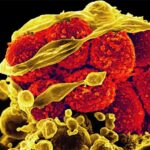It doesn’t happen often but when it does it can be life threatening, and if it doesn’t kill you, you might wish that it had because you feel so bad.
I am talking about keeping your food and your family safe this holiday season by just doing some very simple actions that can make a holiday wonderful, instead of potentially tragic. You see, there are germs out there that are also thankful that you are not doing these simple actions which allow them to live, multiply and wreak havoc on you and your holiday!
Let’s look at the basics
1. Wash your hands. Failure to wash your hands is the number one cause of cross contamination, or allowing germs to go from your hands onto the counter, the refrigerator door handle, the freezer, plates, utensils and then onto your food.
2. When germs get on your food, this causes foodborne illness. FBI or foodborne illness gives the germs the ability to grow and multiply on food surface. The food carries the germs into the refrigerator, hands, and apron or onto your plate. This occurs especially at temperatures that are not cold or hot enough to prevent or destroy the germs.
3. Keep your temperatures for cold food below 41 degrees Fahrenheit and hot foods above 135 degrees (F). If you are lucky enough to have food left over from your meal, refrigerate it immediately and only keep it for a couple of days. Four days at the most for leftover food, if the refrigerator temperature is below 41 (F). Then you need to reheat the food before serving the food again, so reheat to 165 degrees (F) to kill any bacteria that may be lurking around on the food waiting to make you ill.
4. When you reheat, reheat the food rapidly, reaching 165 degrees in less than two hours. Check the temperature, make sure that it is 165, hold it there for 15 seconds, then serve your food. Never reheat leftover food twice, only do it one time. Never mix new fresh food with old food. Old food and new food have had different time and temperature experiences. Keep them apart.
5. Microwaving also is a good way to reheat leftover food quickly, but the 165 (F) still remains the rule, and after it reaches 165 (F), cover and let stand to allow even heat dispersal in all of the food for two minutes.
6. Cooking to the appropriate temperature is also very, very important.
a. Cook turkey or chicken (fowl) to 165 in the thickest part of the bird and hold there for 15 seconds.
b. Cook roasts to 145 interior temperature holding for 15 seconds once reaching 145 for small roasts.
c. Cook larger roasts, 145 degrees for 3 minutes, meaning once interior temperature has been reached, hold it there for three minutes before serving.
d. Cook steak to 145 degrees interior temperature turning at least twice.
e. Cook your hamburger to 155 degrees (F) inside because it is ground up and everything needs to be cooked. Ground beef is not always cooked if it turns grey, go by the thermometer reading.
7. For leftover food or for food cooked for use later, always cool your food rapidly. Lowering the temperature as fast as you can to avoid food sitting out in the warm temperatures or the danger zone where bacteria can grow rapidly.
Do these simple actions and have an enjoyable safe, healthy and happy Thanksgiving holiday!


























